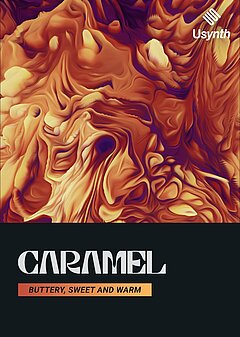The History of Synthesizers
From the beginning of hardware all the way to the present ... and a look at the future of synthesizers emerging only now.
FEBRUARY 25TH, 2022
Read carefully until the end of this article to get an idea of the history of Synthesizers and how modern plug-ins like Usynth shape its future.
A tale of two companies
In the beginning, two of the biggest synth competitors were Bob Moog and Don Buchla. Moog started his company on the East Coast of the US, focusing on loosely replicating the sounds of “real” instruments like basses, brass and more — if you think about it, even to this day, the bass sounds of most softsynths emulate the sound of an electric bass guitar to a certain degree. This approach has largely defined the sound of many modern softsynths since Moog synthesizers formed an extremely effective framework to evolve from.
By contrast, Buchla synths took the opposite approach: rather than focusing on realism, they focused on non-musical, sound design-focused technology that paved the way for tons of sonic experiments and countless forms of avant garde music. This challenged the notion that synthesizers were solely musical tools, opening up opportunities for creative expression that Moog-style synthesizers simply were not capable of executing.
While the distinction between the two companies was entirely cut and dry, it forms a solid foundation we can use to understand the two very different approaches to synthesis as a whole.
The beginning of electronic music
While this technology was impressive at the time as nothing remotely similar had ever come before, it took a long time for electronic music to be accepted by the mainstream. Listeners had no frame of reference for these new sounds and rejected them for quite some time, until they worked their way into popular music. Even then, it took a long time for this to become commonplace as some synthesizers cost more than a house!
Electronic music didn’t become popular as an umbrella genre for quite some time after, but rather as an experimental addition to the music of rock bands like The Beatles and Emerson, Lake & Palmer. This created a smooth transition that allowed listeners to become acclimated to these new sounds, and within a few decades, it became commonplace. Notice the sharp contrast in the sound of the 80s vs. the 70s — the 80s saw electronic film sounds that now form the basis for synthwave, when just a few years prior this was unheard of (largely due to the musical influence of Vangelis, the composer for the Bladerunner film soundtrack).
Around the same time, Brian Eno and other “ambient” artists were taking synthesizers and electronic sounds as a whole in an entirely different direction, focusing more on creating an experience (including interactive sound installations in museums) rather than expanding the boundaries of popular music. Even where Buchla’s synths weren’t directly involved, this is a natural continuation of the original distinction between these two schools of thought, which only blended much later with the emergence of EDM and the emphasis of sound design within pop music, not only as its own separate style.
The introduction of softsynths
To expand outside of the limitations of analog circuitry, digital synths like the DX7 began coming onto the scene in the 80s — this allowed manufacturers to use the MIDI standard to store information in “banks” in which users could recall specific sounds and build new patches that were never possible before, with zero (or fewer) physical wires required to construct sounds. Hardware synths began using onboard computers, but it was still a long time until DAWs were popularized and true softsynths became available in the late 1990s. Once this pivotal moment occurred, it didn’t take long for countless other softsynths to become available.
It’s worth noting that while softsynths were a significant technological leap, they were still based more or less on the principles behind Moog and Buchla hardware synths, translated into a fully digital environment. Steinberg’s VST protocol allowed 3d party software manufacturers around the world to create sound using code without having to develop expensive hardware, which represented a massive cost savings for both companies and consumers alike ... and this critical development made it possible for a new wave of electronic music to emerge, along with a new generation of music producers who were finally able to create professional music with nothing more than a bedroom and a computer.
Many synths operate under the same basic principles — the methods of synthesis may differ, but you’ll often recognize some of the same sections across different plugins. Once you begin to recognize these, the inner workings of your favorite synths will come into focus in a way they never have before.
However, there’s another evolution of synths — one that is already taking out tons of the uncertainty that producers regularly face.
Enter Usynth
UJAM’s first synth, Usynth, is a bit of an oddball in that it deliberately eliminates the distinction between many of the UI components you would normally encounter; plus, there are way fewer knobs and no hidden menus. Why? So that no matter how much experience you have with synths or even music production as a whole, you’re able to pick up Usynth and use it in your music from day 1. Our mission is to empower as many producers as possible to create music they love by significantly lowering the barrier to entry — easier-to-use tools equal both more and quality music, which is better for both producers and listeners.
Usynth still has similar components to other synthesizers, but the biggest difference is how we tucked away as much of the redundant processing as possible — if it doesn’t directly help you create better sounds faster, it’s included under the hood but not in the UI. The user-facing controls change with every one of the Synthesizer section’s presets, giving you only the most relevant parameters suited to the sound you have in front of you. These dynamic changes are unique in that they don’t require you to understand exactly what the synth is doing ... only the end result and how you can effectively manipulate it.
Another benefit of this design is the Surprise feature: clicking the dice icon in the bottom left of the UI randomizes the presets in each of the major sections, giving you a semi-randomized sound that requires little to no conscious effort beforehand. However, Usynth yields consistently on-point results that sound as though they were designed deliberately, rather than the randomize buttons on many synths that typically only serves to make the sound worse! Because of all the extra work done behind the scenes, we have more control over the range of results you achieve this way, making everything more consistent and enjoyable all the way through!
Wrapping up
In the beginning, synthesizers were an incredible invention, but very limited in their capabilities. Over time, more and more analog hardware capabilities were added to the digital realm, and things accelerated even further with the advent of DAWs and the VST plugin format. For years, the focus of synthesizer development has been to add an increasing number of features to already complex technology to allow for more creative possibilities than ever before ... but a side effect of this is rising challenges in the world of music production.
Usynth is UJAM’s answer to growing sophistication in the world of plugins: a simpler interface, more creative and technical decisions made behind the scenes, and fewer steps required to achieve a professional result. Having fewer decisions to make, not more, is the next step in the evolution of synthesizers ... where technology helps guide musical decisions, bridging the gap to high-quality music faster than ever before.
If you want to create music faster and with greater certainty, Usynth can help you get there. Happy producing!
About the Author
Harry Lodes is a copywriter, marketing consultant and content writer for audio and ecommerce brands. He lives in the Philadelphia area, releasing Eastern/Western hybrid EDM under the artist name KAIRI hearkening back to his roots in Berklee College of Music.
Stay up to date
Sign up and we’ll send you an e-mail with product news and helpful stuff every now and then. You may unsubscribe at any time.
Defy Limits
We develop software solutions that enable people to create, consume and interact with music.






